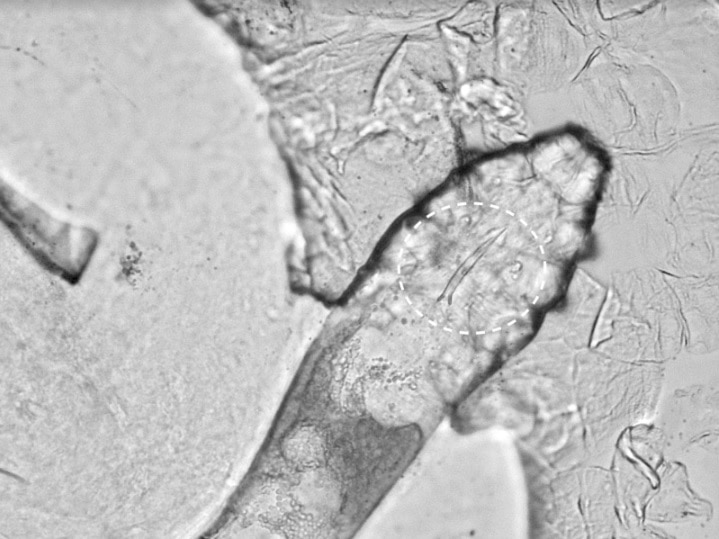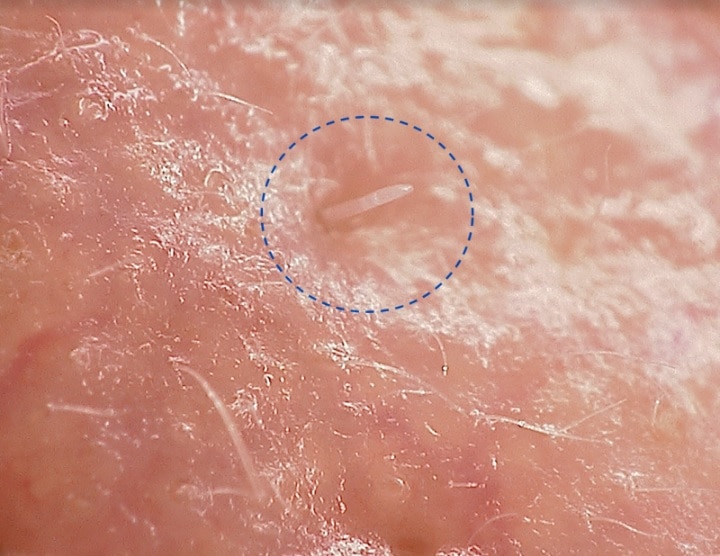Microscopic face mites are on an evolutionary course to merge with us
We are legion, and we're not sure we like it.

Bong Joon-ho’s 2019 thriller Parasite earned widespread acclaim and an Academy Award for Best Picture. It tells the story of the Kim family, who insinuates themselves into the lives of the wealthier Park family. Things, unfortunately, go downhill pretty quickly, resulting in multiple deaths and the fracturing of the Kim family.
The Kim’s were ultimately unsuccessful in forging a more symbiotic relationship with the Park’s, but they might have fared better if they’d had enough time and remained out of sight. That strategy certainly works in nature, at least in the case of microscopic mites living on our faces.
Mites like Demodex folliculorum live out their entire lives inside human pores and we benefit from them almost as much as they benefit from us. However, that wasn’t always the case. In the distant past they were likely true parasites, but millions of years of living on and in human bodies has changed them and us. In a new study published in the journal Molecular Biology and Evolution, Alejandra Perotti from the School of Biological Sciences at the University of Reading, and colleagues, sequenced the genome of D. folliculorum and found that they’ve changed dramatically since they set up shop in our skin.
“Their body plan has changed considerably. If you look at their free-living relatives, they look more like a spider, while these ones look more like a tube,” Perotti told SYFY WIRE.
We’ve likely been living with these mites for as long as we’ve been human. In fact, all true mammals have at least one species of mite which lives in and on the skin. Those mites very probably have a common ancestor but, over millions of years adapting to living on a specific species, they’ve diversified. Now, our mites are dependent on us for their survival, unable to survive anywhere else, even on other mammals.
“They can no longer survive outside of our skin. We are witnessing the shift from parasite to symbiont. We offer shelter in a symbiotic relationship, and they clean our pores,” Perotti said.
These mites exist on practically every single human — there might be a subset of the population who doesn’t have them, but it’s very small if it exists at all — and they are passed from mother to child during birth or breastfeeding. Because they have adapted to living solely on our skin, scientists suspected they must have undergone significant genetic changes from their ancestral form. Some of those changes were obvious. Morphologically, they’ve undergone a reduction to a simpler body plan.
“In free living mites, they have long legs, but these ones are very short. The legs are made of three segments and the interesting part is each segment is only one muscle cell. The whole leg is formed by three cells. They have to move their bodies to reproduce and feed inside the pore and it’s a very limited space,” Perotti said.
Other changes weren’t as immediately clear and needed genome sequencing to uncover. Scientists painstakingly gathered a population from a single human host for DNA sequencing. In larger animals, it’s possible to analyze a single individual and gain enough data for sequencing, but in microscopic mites that isn’t the case. Scientists needed a larger population but once they had it their work was only beginning. Perotti had to isolate individual mites from the sample and clean them with microscopic tools. Even then, getting usable material was a coin toss. The mites are incredibly fragile and about half of the sample population was lost during cleaning. Eventually, however, they gained enough material to sequence the genome.
In addition to changes in the body plan, scientists found that the mites had turned off genes they no longer need, particularly those related to UV protection. Because they live out their lives inside our pores and they’re only active at night, they no longer have to worry about bombardment from the Sun.
“We’ve totally synchronized our entire lives. During the day we are awake, and they are asleep inside the pores. During the night when we are deeply sleeping, they are very active. They move from pore to pore to mate and reproduce. They are also very likely using our melatonin. In mammals, it puts us to sleep, but in small animals like mites, it actually gets them very active,” Perotti said.
The mites, however, aren’t capable of producing their own melatonin anymore. The genes for that activity have been lost. That’s a problem because they need melatonin in order to gain the energy needed for feeding and reproduction. Luckily for the mites, humans secrete huge amounts of melatonin while we sleep, and the mites have adapted to borrow some of it for their purposes.
We have to admit there’s something a little unsettling about huge populations of mites — there are sometimes as many as 20 in a single pore — living inside our skin, but they’ve been with us for as long as we have been us.
“It’s a very old relationship. They are part of us,” Perotti said.
If they want to live in our skin’s figurative basement, it’s probably best for us and them if we consciously look the other way.





























